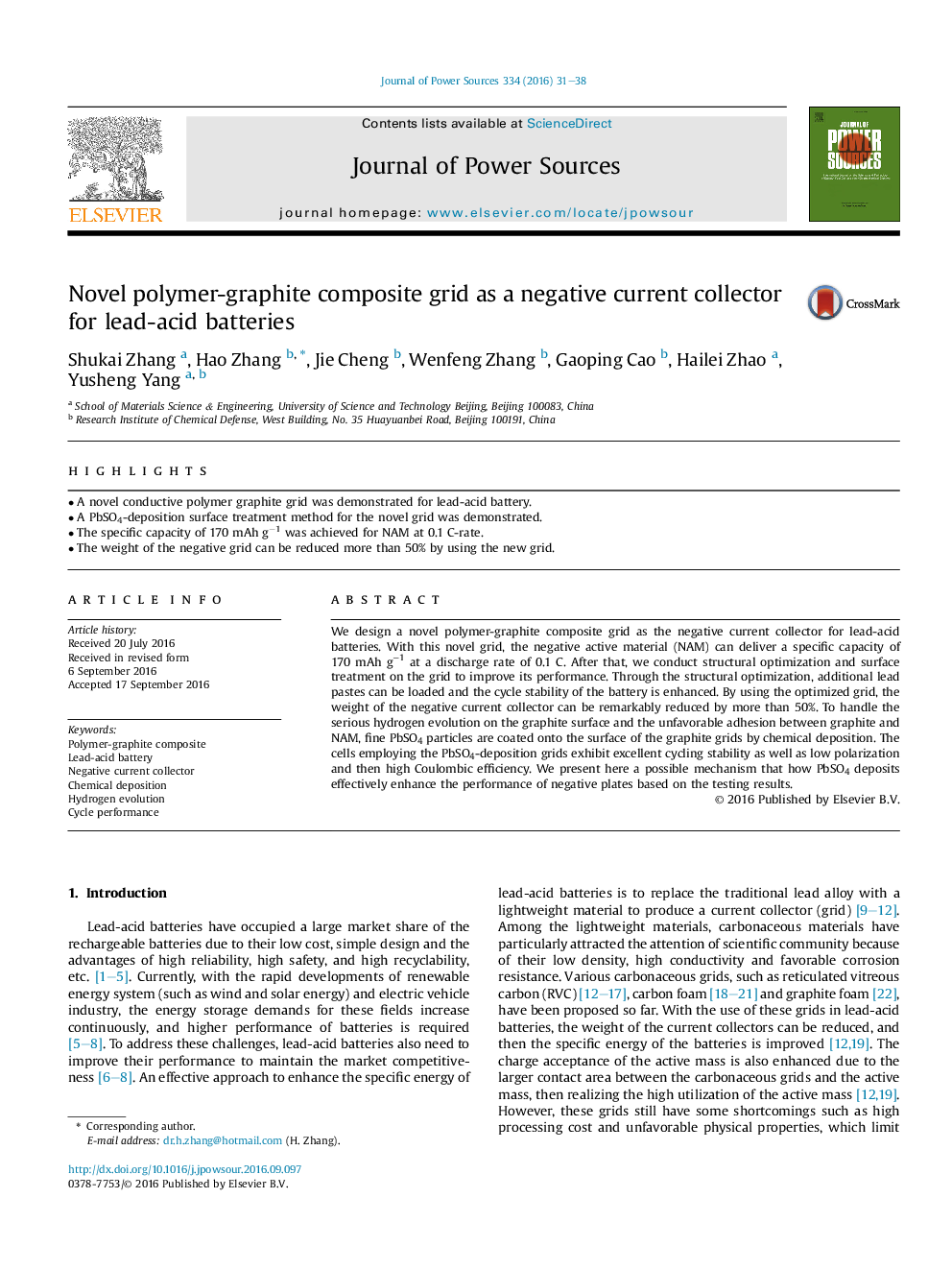| Article ID | Journal | Published Year | Pages | File Type |
|---|---|---|---|---|
| 5150036 | Journal of Power Sources | 2016 | 8 Pages |
Abstract
We design a novel polymer-graphite composite grid as the negative current collector for lead-acid batteries. With this novel grid, the negative active material (NAM) can deliver a specific capacity of 170 mAh gâ1 at a discharge rate of 0.1 C. After that, we conduct structural optimization and surface treatment on the grid to improve its performance. Through the structural optimization, additional lead pastes can be loaded and the cycle stability of the battery is enhanced. By using the optimized grid, the weight of the negative current collector can be remarkably reduced by more than 50%. To handle the serious hydrogen evolution on the graphite surface and the unfavorable adhesion between graphite and NAM, fine PbSO4 particles are coated onto the surface of the graphite grids by chemical deposition. The cells employing the PbSO4-deposition grids exhibit excellent cycling stability as well as low polarization and then high Coulombic efficiency. We present here a possible mechanism that how PbSO4 deposits effectively enhance the performance of negative plates based on the testing results.
Related Topics
Physical Sciences and Engineering
Chemistry
Electrochemistry
Authors
Shukai Zhang, Hao Zhang, Jie Cheng, Wenfeng Zhang, Gaoping Cao, Hailei Zhao, Yusheng Yang,
